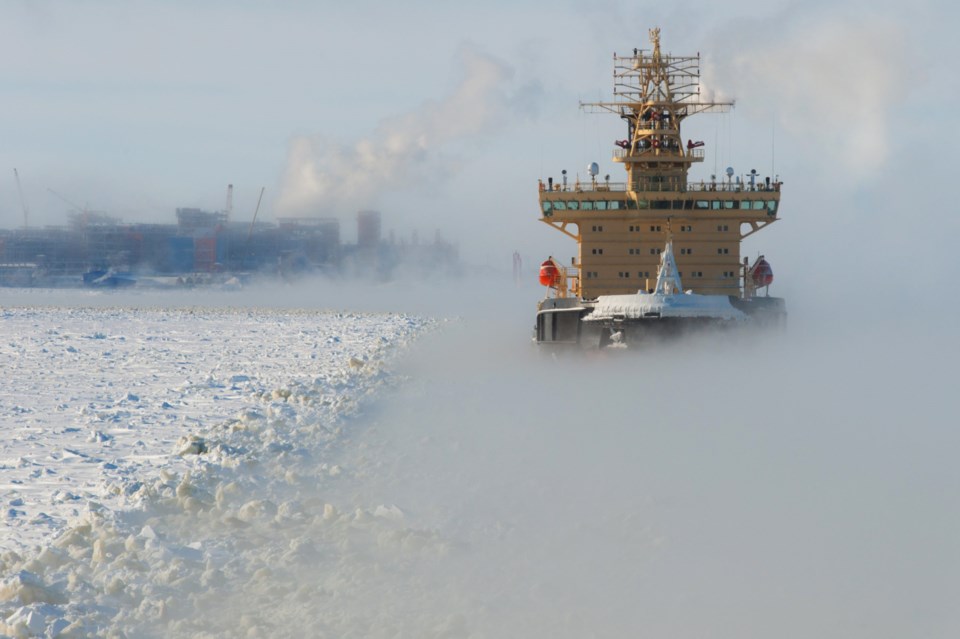In 2015, the United States and Canada shared similar profiles in the natural gas market: both were energy superpowers capable of producing more natural gas than they used at home, and both had a shared issue— little infrastructure to export it. As a result, industry in both countries undertook a flurry of LNG export facility proposals.
Fast forward to 2022, and things have changed: the United States is projected to overtake Qatar as the world’s largest exporter of LNG. To put this feat in perspective, in 2014 the U.S. exported 0.4 billion cubic metres LNG. The U.S. became a net exporters of natural gas in 2017 and is now projected to export 0.32 billion cubic metres daily — nearly the entirety of all 2014 exports every single day – and exports are estimated to be between 72-77 million tonnes of LNG per year (mtpa) in 2021.
In other words, since 2014 U.S. LNG exports have grown by nearly 50% year over year. They have been so successful that Canadian companies have signed supply deals to send Western Canadian gas down to the Gulf Coast.
And Canada? We still export nearly the same amount of LNG as we did in 2014, effectively zero. So where did it all go wrong?
At one time, 13 LNG facilities were proposed in B.C., and five in and Central and Atlantic Canada. Unfortunately, our extended regulatory timelines and complicated legal system have become roadblocks to international investment. Just how serious is this roadblock? In the years between 2014 and 2020 the United States built seven LNG facilities, has five more under construction and additional 15 approved.
Within that same period, of the 13 projects considered for B.C., Canada has only one operational LNG facility. One start-up, the Fortis Tilbury LNG plant produced about 0.25 mtpa of LNG for export with upgrades to bring it to 0.65 mtpa. That’s about 0.05-0.14% of the total 475 mtpa global LNG industry. Fortis BC are currently in the process of permitting a 2.5 mtpa expansion that is needed to provide marine bunkering fuel and exports abroad.
The good news is Canada does have one world-scale plant under construction: the LNG Canada facility near Kitimat, where the first two trains should be complete by mid-decade. When built, the plant will initially provide around 6.5 mtpa up to 14 mtpa with a potential for future expansion to 26 mtpa.
It took the leadership of the Haisla Nation, as well as many other northern B.C. communities to get the project approved and built. The project is also to the credit of the provincial and federal governments that said yes to a historic $42 billion private investment and continue to stand by the project through construction.
All good news – but this still only leaves Canada with an estimated export capacity of around 15 to 17.5 mtpa, or 3.16-3.68% of global LNG exports.
Over the past seven years we needed to push projects forward, but we didn’t. As a result, for many potential developers the choice where to put capital isn’t in Canada, but in countries where projects can be built in a reasonable time.
In the fall I highlighted what could be cold winters and a looming energy crisis in China and Europe. This has happened. There are daily stories about drastic increases in price dictated by Russian gas supplies and shutdowns of nuclear plants. To help deal with this, the EU has put forward legislation to label investments in nuclear and some natural gas facilities as “green.” In fact, the demand for natural gas is so great that over Christmas, much of the LNG from the U.S. Gulf Coast was routed to Europe.
Think about that for a moment. If even one proposed Canadian project on the East Coast was up and running, we could be helping with an international energy crisis. With prices as high as they are, we could even have shipped through the Panama Canal to reach market from the West Coast. Instead, Canada must watch from the bench.
Natural gas is in serious demand, and only set to grow. And Canada is in competition with countries like Qatar that don’t have the same environmental, social, and governance (ESG) standards, Australia which is a mature exporter with established infrastructure, and of course, the United States.
There is still some hope for Canada to boost output. While many projects have dropped off, some are still making progress. Woodfibre LNG (2.1 mtpa) completed the regulatory process several years ago and seems to be continuing to push forward.
The next wave of projects all have one thing in common: Indigenous leadership and partnerships. Both the Cedar LNG (3-4 mtpa) led by Haisla Nation and Ksi Lisims LNG (12 mtpa) led by Nisga’a Nation would help push Canadian exports upward, though the fact remains that the United States has beaten us to the punch.
Canada’s total contribution to global emissions is less than 2%. Our energy remains some of cleanest, most affordable, and abundant in the world. We continue to produce it with the highest standards in the world with companies driving down emissions every day. We have not only left billions of dollars that could be going to schools, hospitals, flood recovery, and pandemic response on the table – but handed that money to jurisdictions that aren’t meeting our same standards.
The issue with losing international investment is once it’s gone, it’s not easy to get back. We need bold leadership to attract investments and drive our country forward.
Jack Middleton is an Advisor for Citizen Engagement and Outreach in B.C. with CAPP.
James Robson is an Advisor, Citizen Engagement & Special Initiatives with CAPP.



